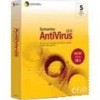Symantec 10551441 Administration Guide - Page 124
How to assign primary actions and secondary actions for other detected threats
 |
UPC - 037648270472
View all Symantec 10551441 manuals
Add to My Manuals
Save this manual to your list of manuals |
Page 124 highlights
124 Scanning for viruses and other threats Configuring scan options How to assign primary actions and secondary actions for other detected threats You can assign a primary action and, in case the primary action is not possible, a secondary action for Symantec AntiVirus to take when it discovers a threat other than a virus, such as adware or spyware. Figure 3-2 Scheduled Scan Options dialog box with Exp. Threats tab In the Scheduled Scan Options dialog box, shown in Figure 3-2, you can assign the following actions for other detected threats: ■ Delete infected file: Attempts to delete the file. This action is available when deleting the file will not cause a system failure. ■ Leave alone (log only): Denies access to the file, displays a virus notification, and logs the event. Use this option to control how Symantec AntiVirus handles a threat. An alert is sent when the threat is detected but no action is taken. You must then take action. For example, you may need to notify the user, and then instruct the user to uninstall the software that poses a threat.















